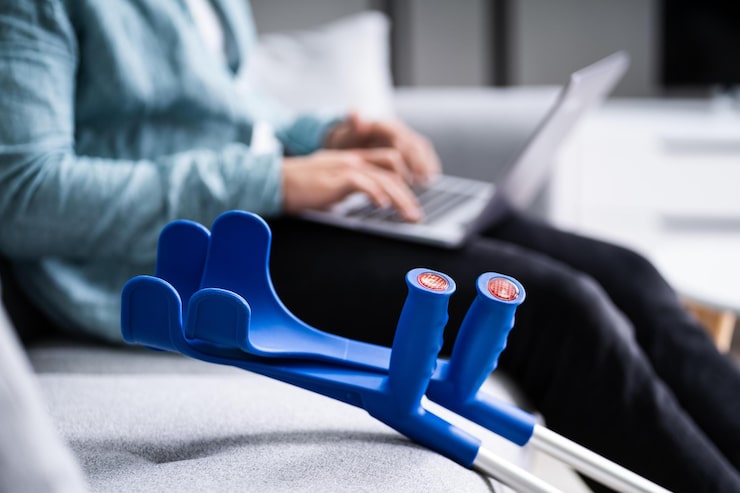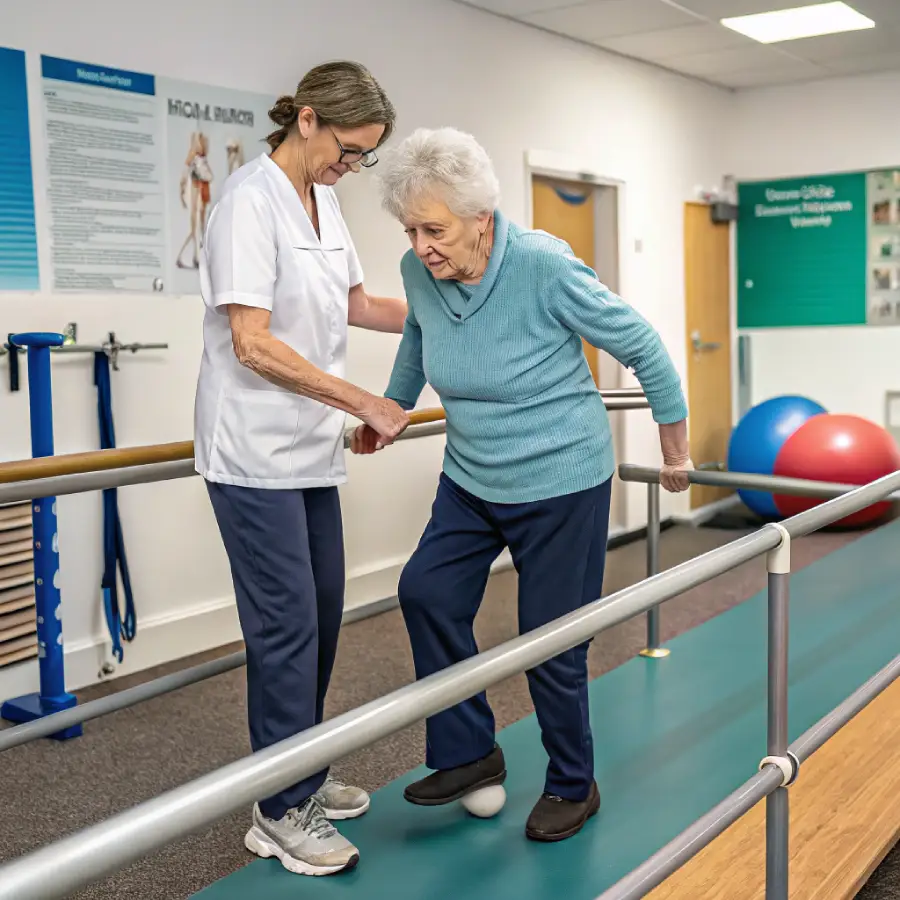Injuries can be life-altering, often leading to reduced mobility and independence. Whether it’s a sports injury, an accident, or the aftermath of surgery, regaining movement is a critical step in the recovery process. Physiotherapy plays a pivotal role in helping individuals restore their mobility, ensuring they can return to their daily activities with confidence and ease. This article form best physiotherapy clinic in Scarborough explores how physiotherapy can improve mobility after an injury, highlighting various techniques, benefits, and real-life success stories.
What is Mobility and Why is it Important?
Mobility refers to the ability to move freely and easily. It is essential for performing daily tasks, maintaining independence, and ensuring a good quality of life. Mobility is not just about walking; it includes all forms of movement such as bending, stretching, and reaching. Injuries can significantly impact these abilities, making it challenging to carry out everyday activities.
What Types of Injuries Commonly Affect Mobility?
Several types of injuries can hinder mobility, including:
- Sprains and Strains: These involve the overstretching or tearing of ligaments and muscles, commonly affecting the ankles, knees, and wrists.
- Fractures: Broken bones can severely limit movement until they heal.
- Dislocations: Joints that are forced out of position can cause pain and restrict movement.
- Soft Tissue Injuries: Damage to muscles, tendons, and ligaments can result from trauma or overuse.
- Post-Surgical Recovery: Surgery, especially orthopedic procedures, often requires a period of rehabilitation to restore mobility.
How Does Physiotherapy Aid in Injury Recovery?
Physiotherapy is a healthcare profession that focuses on the assessment, diagnosis, treatment, and prevention of physical impairments. Physiotherapists use a variety of techniques to help patients recover from injuries, reduce pain, and improve overall function. The primary goal is to restore maximum movement and functional ability.
What Physiotherapy Techniques are Used to Improve Mobility?
Manual Therapy
Manual therapy involves hands-on techniques to manipulate muscles, joints, and soft tissues. This can help reduce pain, increase range of motion, and improve overall mobility. Techniques include:
- Joint Mobilization: Gentle, controlled movements of the joints to increase mobility and reduce stiffness.
- Soft Tissue Mobilization: Massage and other techniques to release muscle tension and improve circulation.
Therapeutic Exercises
Exercise is a cornerstone of physiotherapy. Customized exercise programs are designed to improve strength, flexibility, and endurance. Key exercises include:
- Range of Motion Exercises: To maintain or increase the movement in joints.
- Strengthening Exercises: To build muscle strength, which supports joints and enhances mobility.
- Flexibility Exercises: To stretch muscles and improve flexibility.
Electrotherapy
Electrotherapy uses electrical signals to reduce pain, improve circulation, and promote healing. Common electrotherapy treatments include:
- Transcutaneous Electrical Nerve Stimulation (TENS): To relieve pain by sending electrical impulses through the skin.
- Ultrasound Therapy: To promote tissue healing with sound waves.
Hydrotherapy
Hydrotherapy involves exercises performed in water. The buoyancy of water reduces stress on the joints, making it easier to perform movements that might be too painful on land. Benefits of hydrotherapy include:
- Reduced pain and swelling
- Improved joint mobility
- Enhanced muscle strength
Gait Training
Gait training focuses on improving walking ability. It is particularly useful for individuals recovering from lower limb injuries or surgeries. Techniques include:
- Treadmill Training: Walking on a treadmill, sometimes with the assistance of harnesses or supports.
- Balance Exercises: To improve stability and prevent falls.
How is a Personalized Physiotherapy Plan Created?
A successful physiotherapy program is tailored to the individual’s specific needs and goals. The process typically involves:
- Initial Assessment: Evaluating the patient’s condition, medical history, and specific mobility issues.
- Goal Setting: Establishing realistic and achievable goals.
- Treatment Plan: Developing a customized plan that includes a variety of techniques and exercises.
- Regular Monitoring: Continuously assessing progress and making necessary adjustments to the treatment plan.
What are the Benefits of Physiotherapy for Post-Injury Mobility?
Physiotherapy offers numerous benefits for individuals recovering from injuries, including:
- Pain Reduction: Techniques such as manual therapy and electrotherapy can help alleviate pain.
- Improved Mobility: Customized exercises and treatments enhance movement and flexibility.
- Faster Recovery: A structured physiotherapy program can speed up the healing process.
- Prevention of Further Injuries: Strengthening and flexibility exercises help prevent re-injury.
- Enhanced Quality of Life: Regaining mobility allows individuals to return to their daily activities and hobbies.
How Can You Maximize the Benefits of Physiotherapy?
To get the most out of physiotherapy, consider the following tips:
- Stay Consistent: Regular attendance and adherence to the treatment plan are crucial for success.
- Follow Home Exercise Programs: Continue exercises at home as recommended by the physiotherapist.
- Communicate Openly: Keep your physiotherapist informed about your progress and any issues you encounter.
- Set Realistic Goals: Work with your physiotherapist to set achievable milestones.
- Be Patient: Recovery takes time, and gradual progress is key to long-term success.
Sum Up
Physiotherapy is a powerful tool in the recovery process after an injury. It offers a range of techniques to reduce pain, improve mobility, and enhance overall quality of life. By working closely with a skilled physiotherapist and following a personalized treatment plan, individuals can achieve significant improvements in their movement and function. Whether recovering from a sprain, fracture, or surgery, physiotherapy provides the support and expertise needed to get back on track and live life to the fullest.
Frequently Asked Questions
1. How soon after an injury should I start physiotherapy?
It’s generally recommended to start physiotherapy as soon as possible after an injury, usually within a few days to a week. Early intervention can help reduce pain, minimize swelling, and promote faster recovery.
2. How long does it take to see results from physiotherapy?
The timeline for seeing results varies depending on the severity of the injury and the individual’s overall health. Some people may notice improvements within a few sessions, while others might take several weeks or months to experience significant progress.
3. Can physiotherapy help with chronic pain?
Yes, physiotherapy can be very effective in managing and reducing chronic pain. Through a combination of exercises, manual therapy, and other techniques, physiotherapists can help improve mobility and reduce pain over time.
4. Do I need a referral from a doctor to see a physiotherapist?
In many places, you can see a physiotherapist without a doctor’s referral. However, it’s always a good idea to check with your local healthcare system or insurance provider to understand the specific requirements.
5. What should I wear to my physiotherapy sessions?
It’s best to wear comfortable, loose-fitting clothing that allows easy movement. Athletic wear, such as shorts, t-shirts, and athletic shoes, is usually ideal for physiotherapy sessions.










